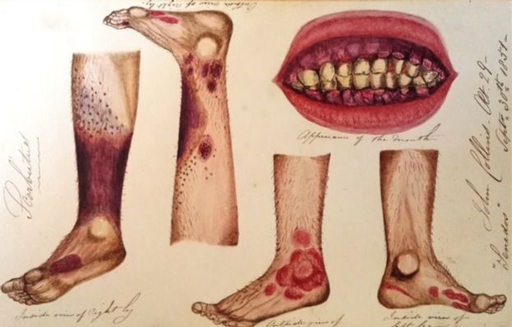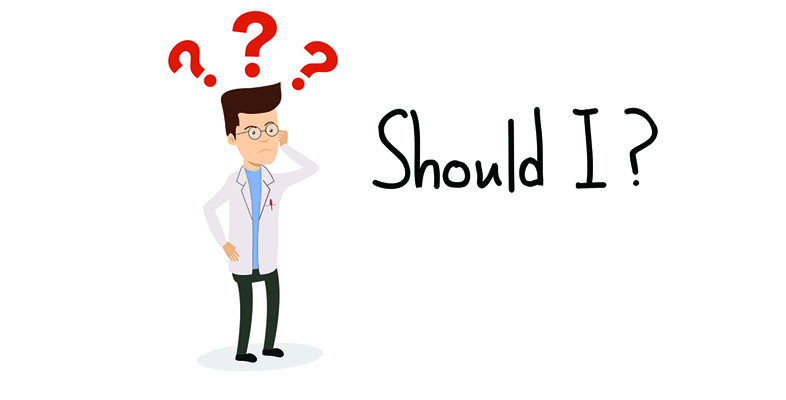1.1 Scurvy: The first clinical trial
Scurvy, a common condition amongst sailors in the 18th century, is rarely seen nowadays, as a result of greater understanding of the causes of this often deadly condition.
Historically, from Greek and Roman times it had been noted that sailors out at sea for periods of more than three months often showed a range of symptoms, including:
- feeling very tired and weak all the time (fatigue)
- a general sense of feeling ‘out of sorts’
- pain in the limbs, particularly the legs
- the appearance of small red-blue spots on their skin.
The condition was reported to cause ‘funguous [sic] flesh... putrid gums and... dreadful terrors’ (according to Lind’s Treatise on Scurvy, 1753), all now known to be symptoms of scurvy.

Watch Video 1 (What the Industrial Revolution did for us, 2003) to discover more about scurvy.

Transcript: Video 1 What the Industrial Revolution did for us. Presenter Dan Cruickshank tells the story of the first clinical trial, proving that oranges and lemons could save the lives of sailors by preventing scurvy. (2:48 min)
What are the symptoms of scurvy?
Scurvy was a debilitating disease of sailors that resulted in loose teeth, haemorrhaging gums, bruises on the skin and eventually heart failure and death.
In Lind’s experiment on the treatment of scurvy six pairs of men were each given one of the treatments. Why do you think there were two men for each treatment?
If something happened to one of the men (such as sudden death), the other would still be observable in the experiment. And if both survived, Lind was ensuring that he had one replicate result for each test.
